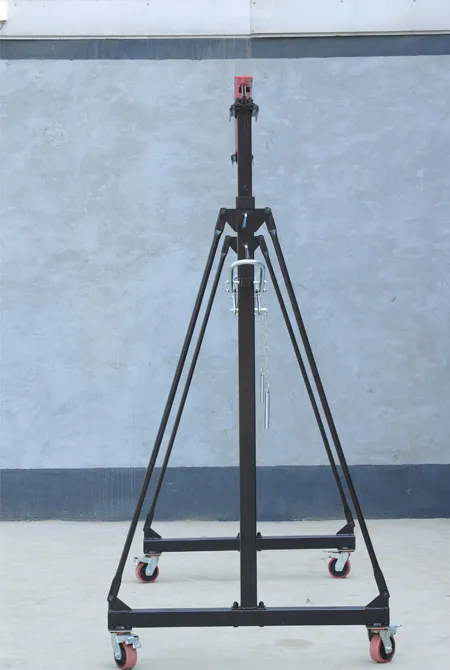types of gantry cranes
Types of Gantry Cranes A Comprehensive Overview
Gantry cranes are essential devices used in various industries for lifting and moving heavy materials. Characterized by their overhead structure supported by legs on either side, gantry cranes offer a practical solution for transporting goods in warehouses, factories, and construction sites. Understanding the types of gantry cranes available helps businesses select the right equipment for their specific needs. Here, we explore the main types of gantry cranes and their applications.
1. Portable Gantry Cranes
Portable gantry cranes are versatile and easy to set up, making them a popular choice for smaller workshops and job sites. These cranes are typically made from lightweight materials, enabling mobility. They can be adjusted in height and are often equipped with wheels, allowing them to be moved around as needed. This flexibility makes portable gantry cranes ideal for handling smaller loads and projects that require frequent repositioning.
2. Fixed Gantry Cranes
Fixed gantry cranes, in contrast to their portable counterparts, are designed for permanent installation in a specific location. These cranes are often constructed from robust materials such as steel and offer greater stability and lifting capacities. Fixed gantry cranes are commonly used in manufacturing facilities and shipyards, where they assist in moving large, heavy loads over considerable distances. The strength and durability of these cranes make them suitable for rigorous industrial applications.
Adjustable gantry cranes provide a unique blend of flexibility and stability. These cranes allow users to change the height and width of the frame, accommodating different load sizes and working environments. Adjustable gantry cranes are particularly useful in situations where varying heights are required, or when specific clearances are needed. This adaptability makes them an excellent choice for a range of industries, including construction and automotive manufacturing.
types of gantry cranes

4. Double-Girder Gantry Cranes
For applications needing increased lifting capacity and stability, double-girder gantry cranes are the go-to option. These cranes feature two girders that span the width of the workspace, providing a more substantial support structure. This design allows for greater lifting heights and a broader range, which is ideal for heavy-duty tasks. Double-girder gantry cranes are often utilized in steel mills, heavy equipment manufacturing, and other industrial environments where robust lifting solutions are required.
5. Single-Girder Gantry Cranes
Single-girder gantry cranes are simpler in design, featuring one girder for support. While they typically have lower lifting capacities compared to double-girder models, they are still widely used due to their lower cost and ease of installation. These cranes are suitable for lighter loads and are commonly found in smaller manufacturing facilities and workshops. Their compact size and efficiency make them an attractive option for businesses seeking manageable lifting solutions.
6. Semi-Gantry Cranes
Semi-gantry cranes combine features of both gantry and overhead cranes. One side of the crane is supported by a rail or a fixed structure, while the other side operates on its own rail. This design allows for more efficient use of space, as they can be placed next to walls or machinery, maximizing the available workspace. Semi-gantry cranes are popular in warehouses and manufacturing facilities where floor space is at a premium.
Conclusion
In summary, gantry cranes come in various types, each designed to meet specific lifting and mobility requirements. From portable options for light-duty tasks to robust double-girder models for heavy industrial applications, understanding the different types of gantry cranes can significantly enhance operational efficiency. By selecting the right crane for their needs, businesses can optimize material handling processes and improve productivity in their operations.
-
Unlock Seamless Relocation with Our Heavy Equipment Moving ExpertiseNewsJun.06,2025
-
Unleash Unrivaled Flexibility with Our Adjustable Gantry CraneNewsJun.06,2025
-
Unleash Heavy-Duty Efficiency with Our Industrial Gantry Crane SolutionsNewsJun.06,2025
-
Revolutionize Steel Handling with Our Magnetic Lifter RangeNewsJun.06,2025
-
Master Equipment Mobility with Premium Machinery Mover SolutionsNewsJun.06,2025
-
Elevate Your Material Handling with Magnetic Lifter TechnologyNewsJun.06,2025
-
YS Permanent Lifting Magnets: The Smarter Way to Handle SteelNewsMay.22,2025
